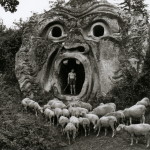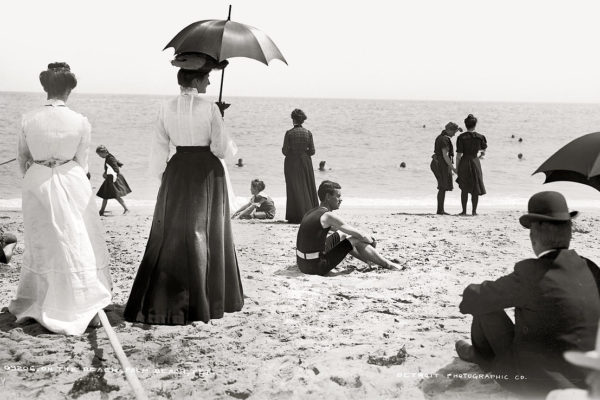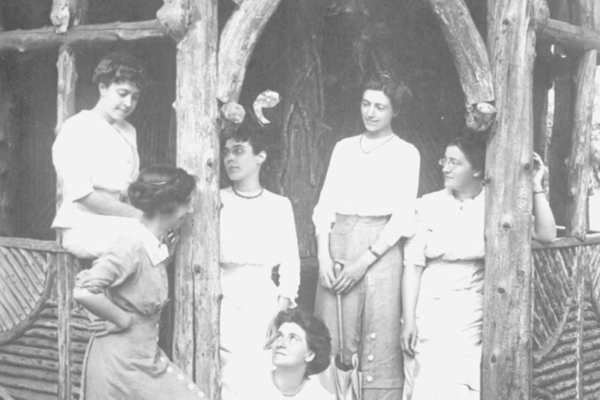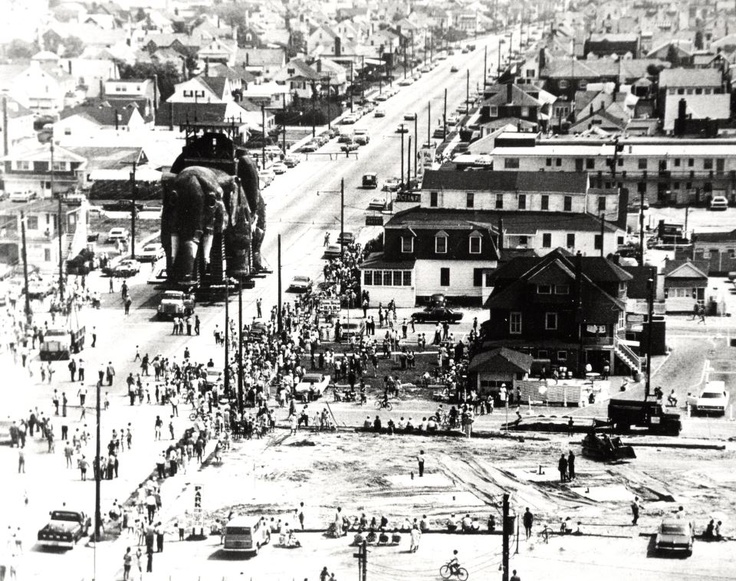
If you build it, they will come. That was the logic behind American real estate magnate James V. Lafferty when he embarked on the most Edwardian PR stunt ever: to build a gigantic elephant. (Apparently it was a thing).
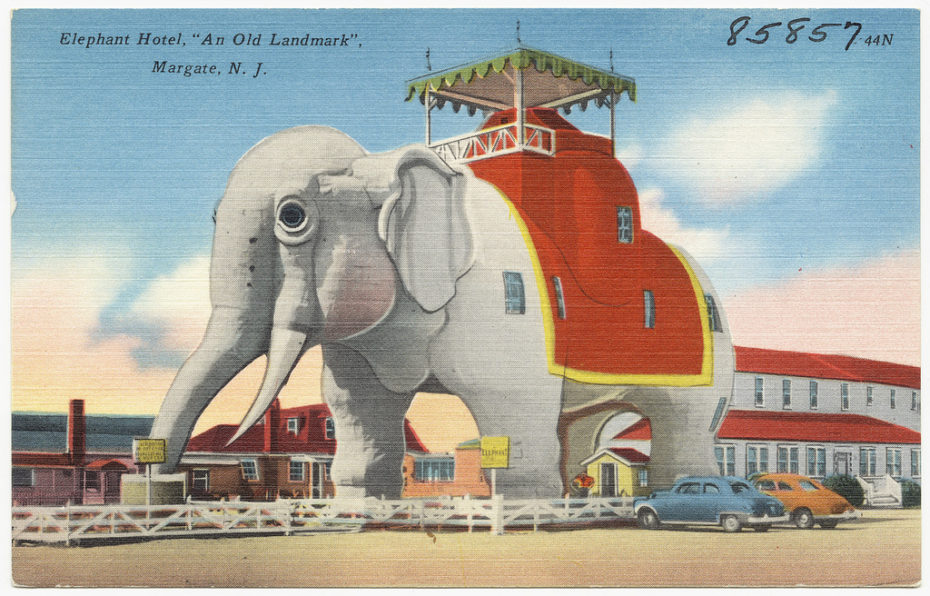
The idea was to catch folks’ interest with it, and then lure them inside to show off his South Atlantic City properties from the look-out. Once she was completed in 1882, everyone from presidents, to celebs and the Average Joe came to gawk at the “Elephant Bazaar”. The building was composed of about a million pieces of wood, and 12,000 square feet of tin for the exterior.
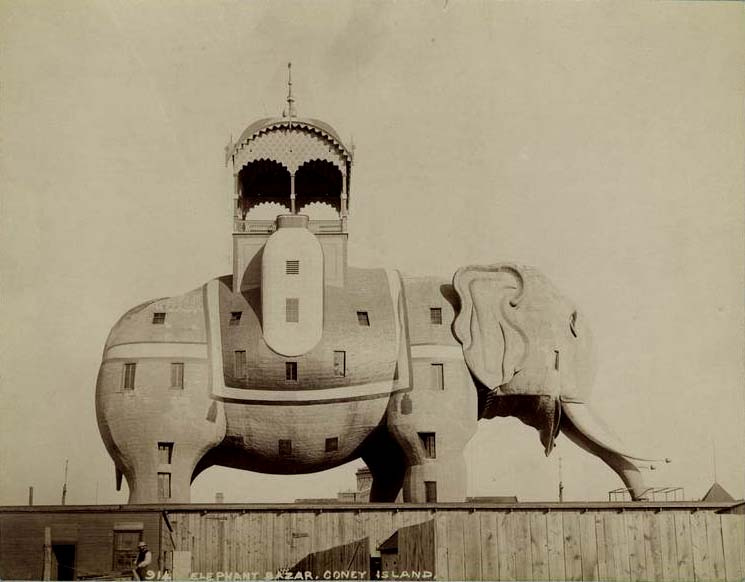
She towered over present day Margate, New Jersey, at a height of 65ft. The elephant’s eyes contained telescopes and acted as an observatory for visitors. Its manager claimed to see, from the elephant’s back, Yellowstone Park, Rio de Janeiro, and Paris.
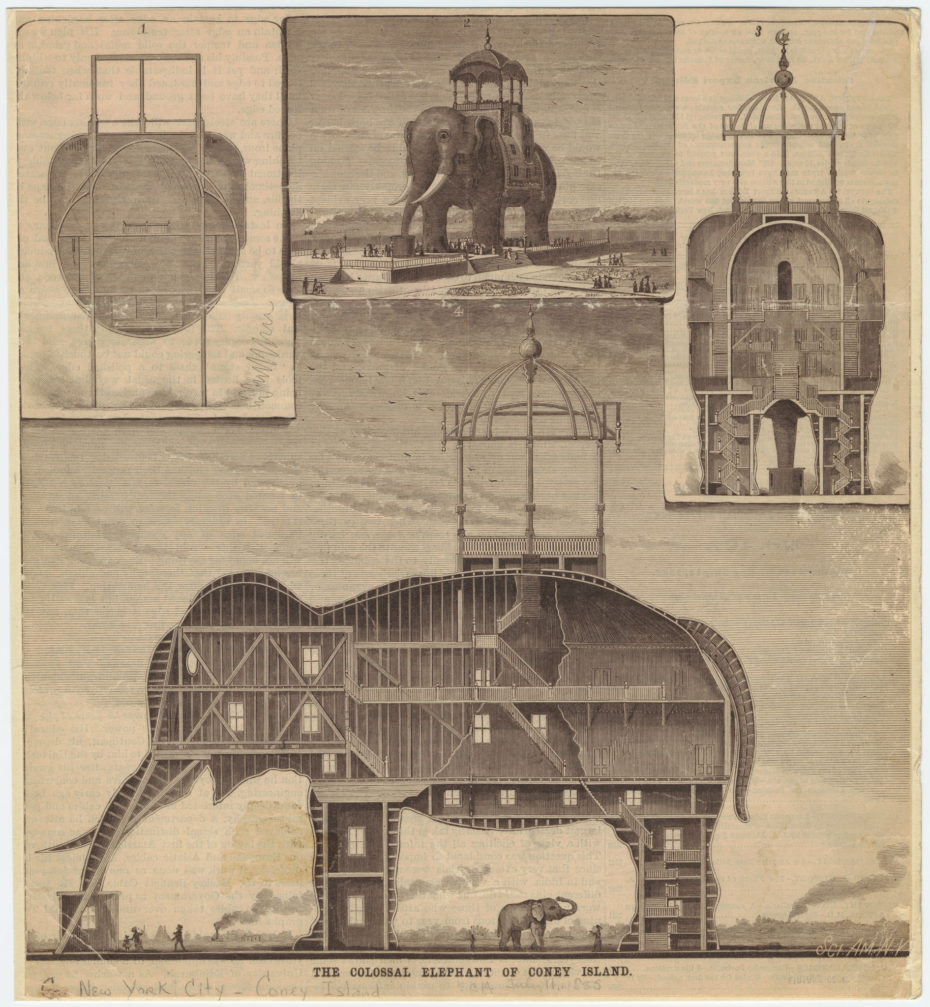
She was inspired by PT Barnum‘s famous circus elephant, Jumbo, but the idea also may also have come from a statue commissioned by Napoleon, which was built on the Place de la Bastille. In Les Miserables, Gavroche lives in the elephant statue which wasn’t designed as a building, but was hollow. It existed between 1813 and 1846 until it was replaced by the July column.
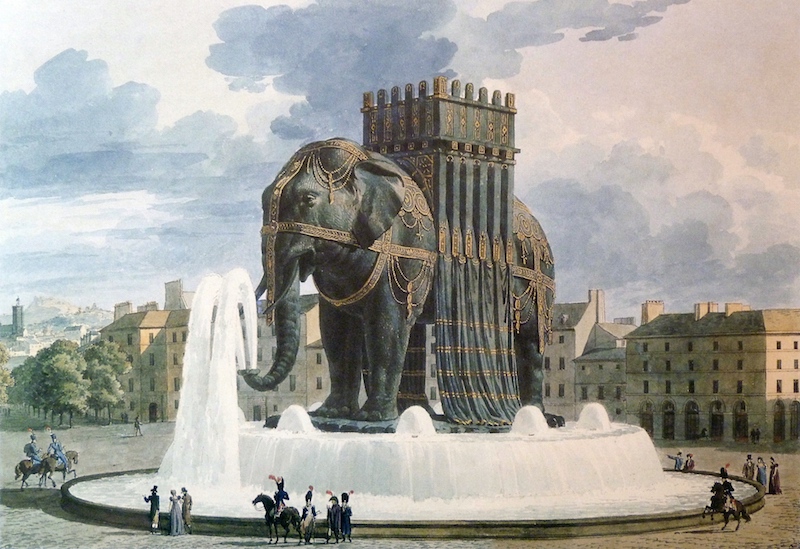
Lafferty went on to build two other elephants and even secured a 17-year patent that gave him the exclusive building and selling rights of any “animal-shaped buildings” in the area. Why? Because it was weird, and it worked. His second was the “Elephantine Colossus” at Brooklyn’s Coney Island. The thirty-one room building acted as a hotel, concert hall, and amusement bazaar until it eventually turned into an ill-fated brothel and burned down in 1896. Lafferty’s third elephant was the “Light of Asia,” in Cape May, which wasn’t as successful and was torn down within 16 years.
Yet another elephant would find its way to Paris to the gardens of the Moulin Rouge, inspired in turn by Lafferty’s New Jersey folly.
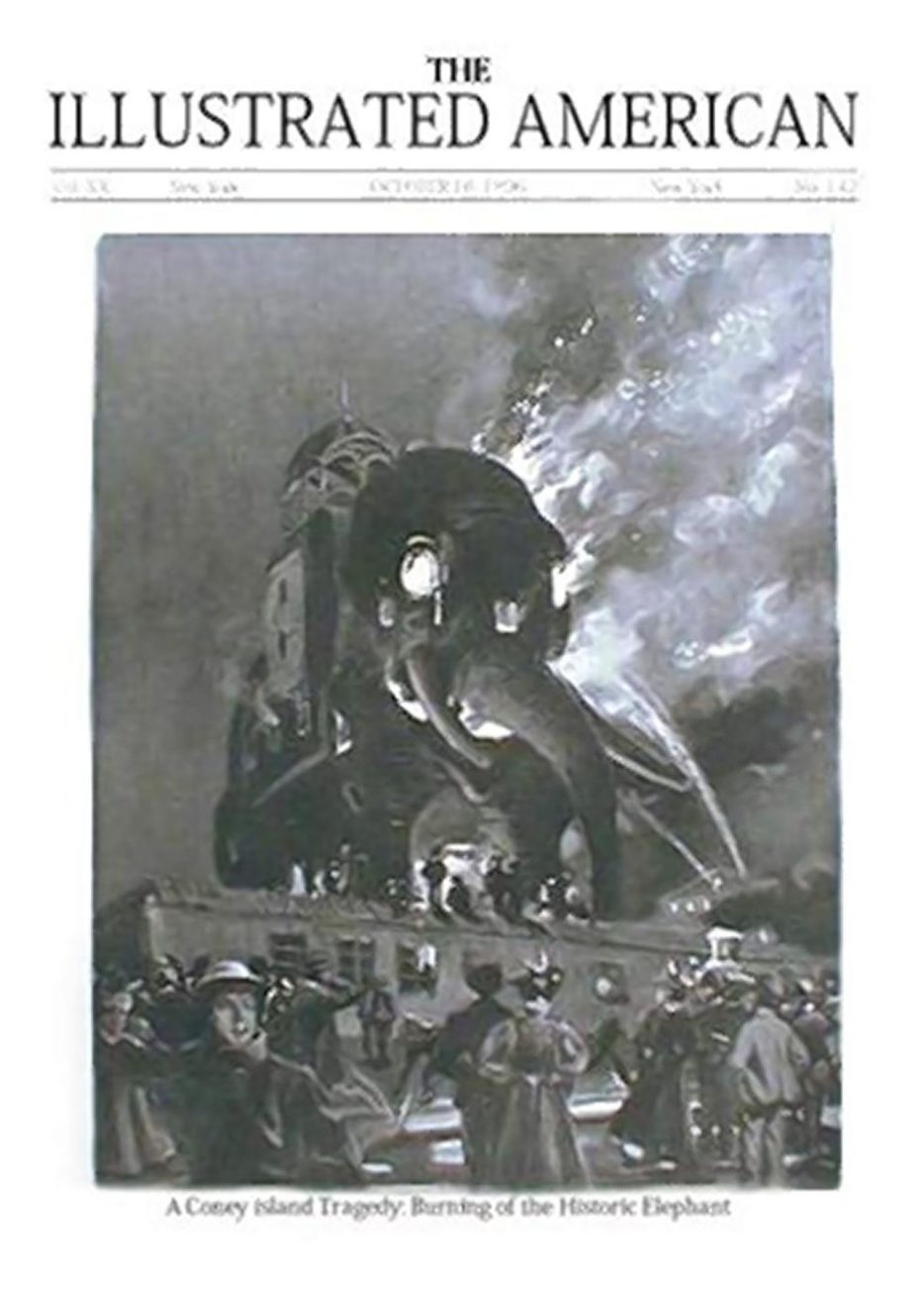
These Edwardian follies however, didn’t always have the longest life spans. By the early 1900s, he’d sold his first and only remaining beloved elephant at Margate to the Gerzen family from Philly, and it went through phases of being a bar, restaurant, office space, and even a rentable summer house. Most importantly, it was the Gerzens who started calling it “Lucy”.

Fast-forward to the 1960s, and Lucy was in danger; her tin had rusted and her walls were near dilapidated. She had been the last of Lafferty’s great elephants to survive, and now the community had 30 days to save her hide, or watch her crumble.
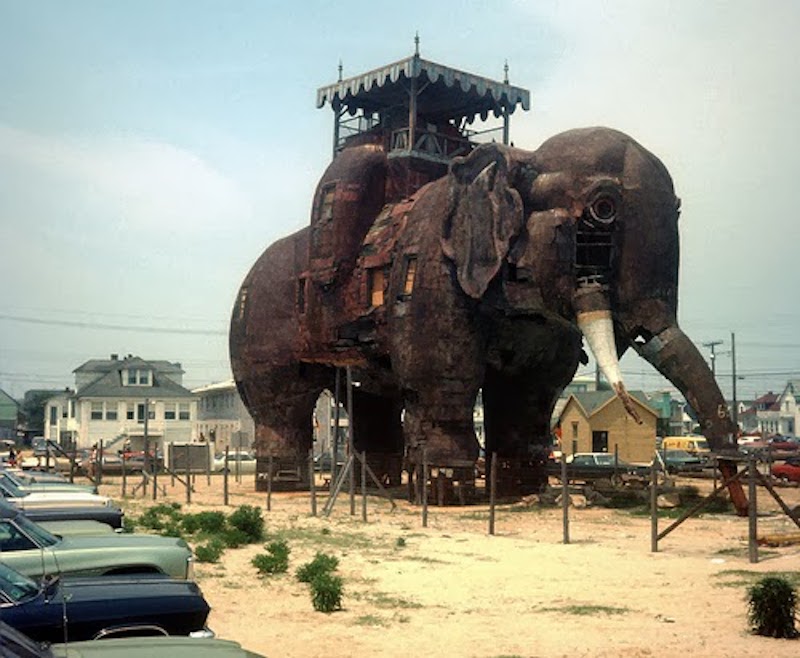
Luckily for us, Lucy had a happy ending. Margate citizens banded together a Save Lucy Committee in 1969, canvasing to raise money for her restoration.
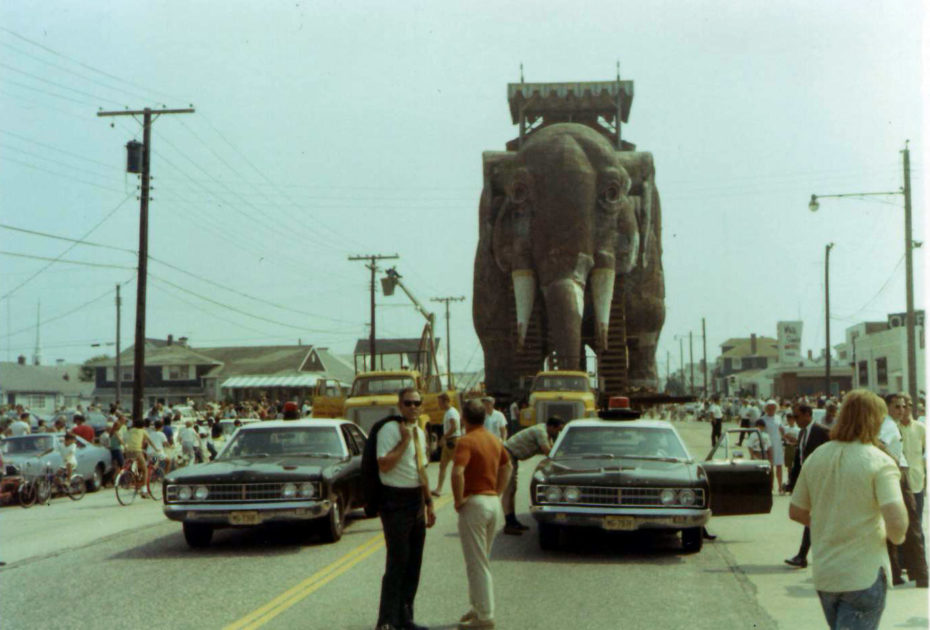
By July of 1970, she was ready for her facelift, and a move to a new area on S. Decatur Ave. The cherry on top of the success was seeing the 90 ton Lucy cruise down Atlantic Avenue to her new home — a victory march if ever there was one.
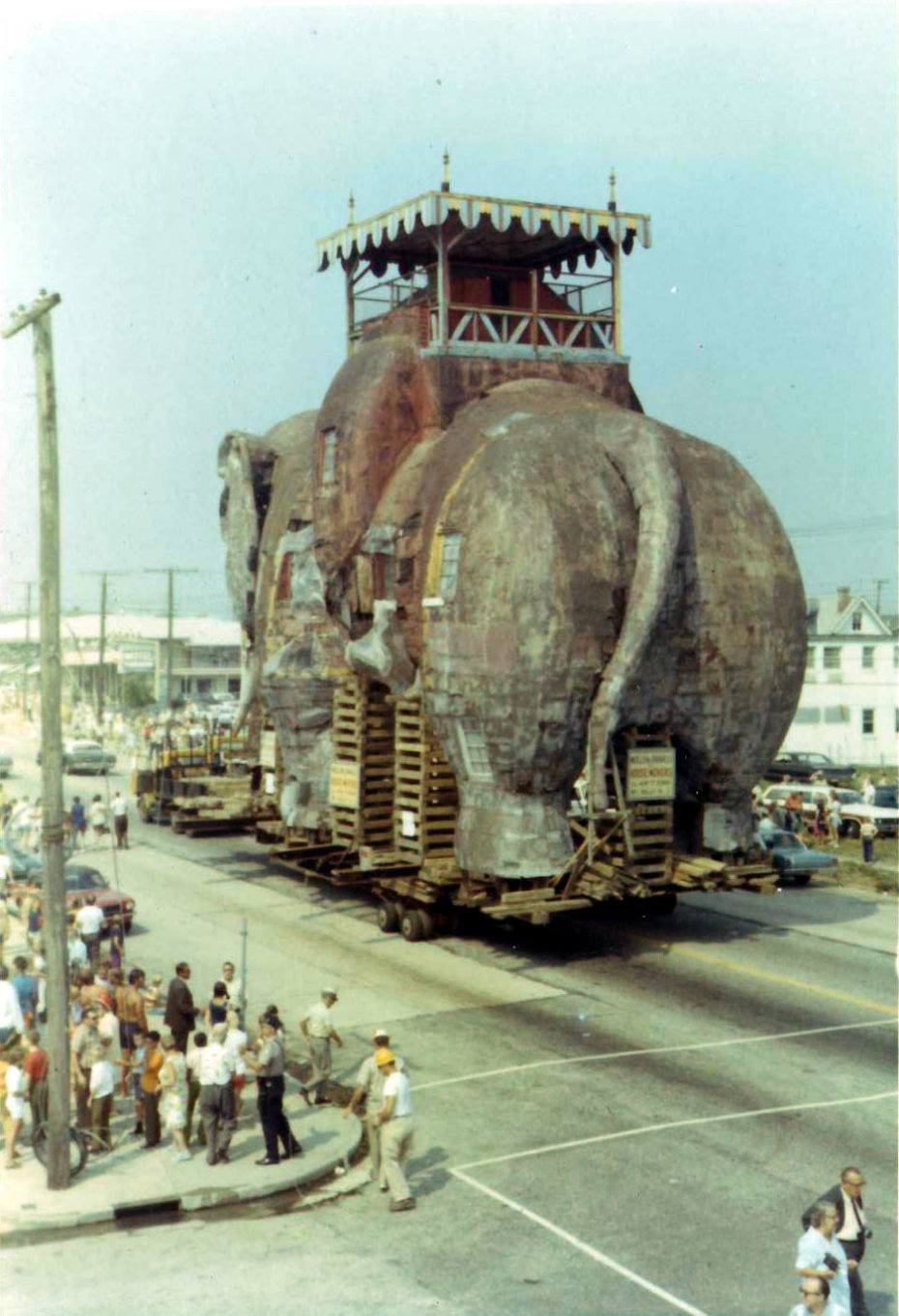
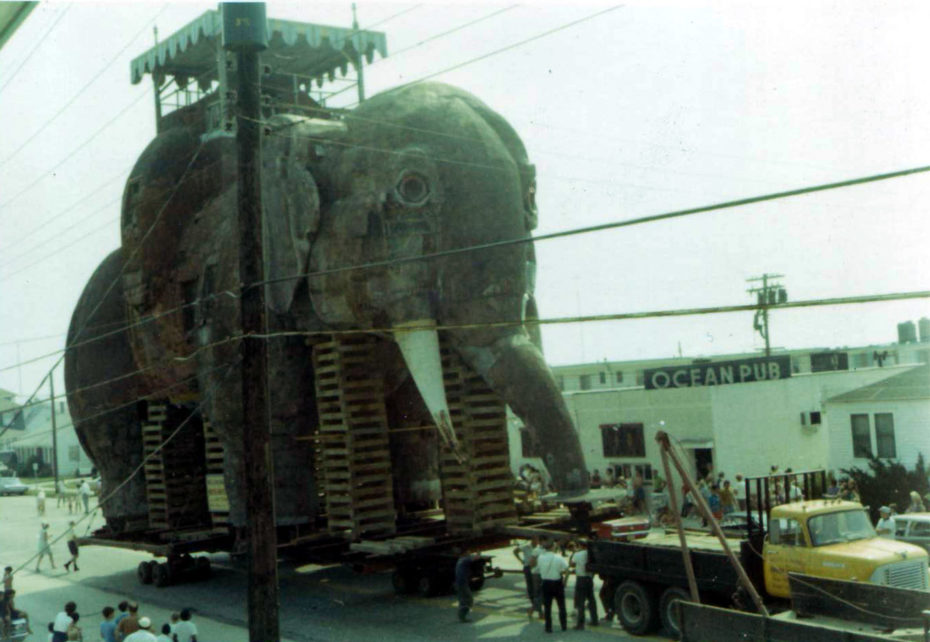
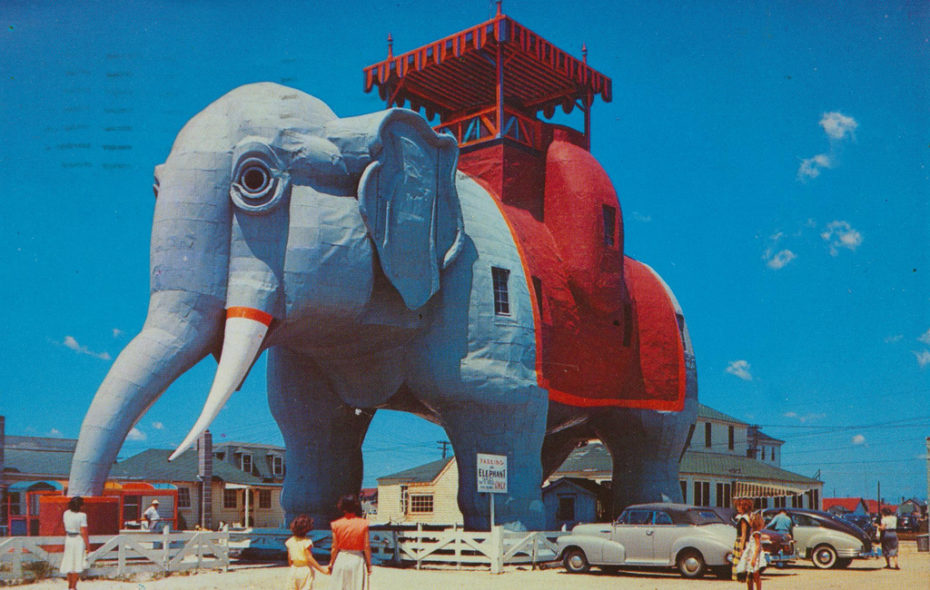
Today, Lucy is the oldest surviving roadside tourist attraction in America and the last of the Lafferty elephants, lovingly tended to as a National Historic Landmark. You can even poke around inside her belly to learn more about her history:
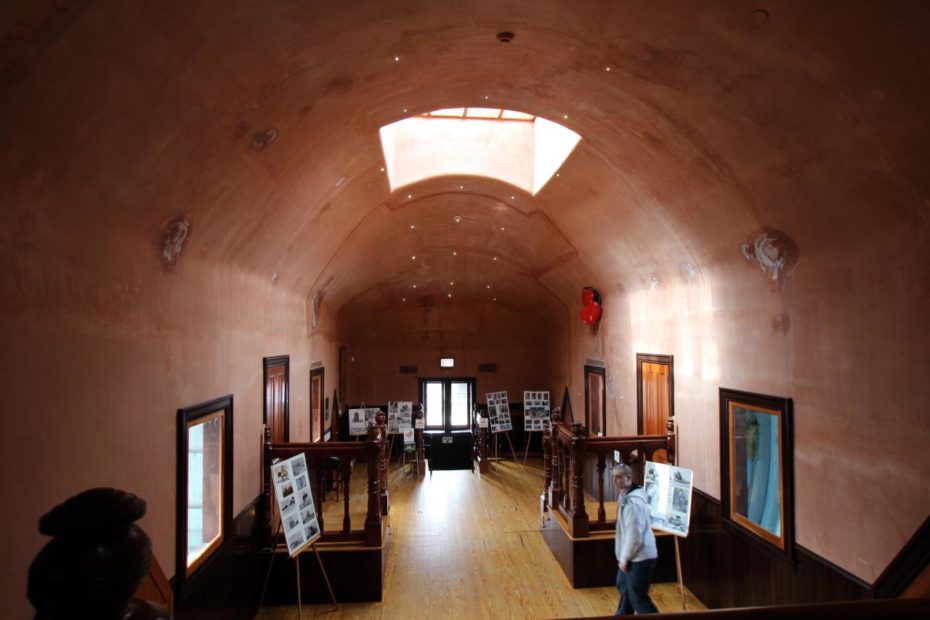
Colby Grindean
Learn more about planning your pilgrimage to her here.


